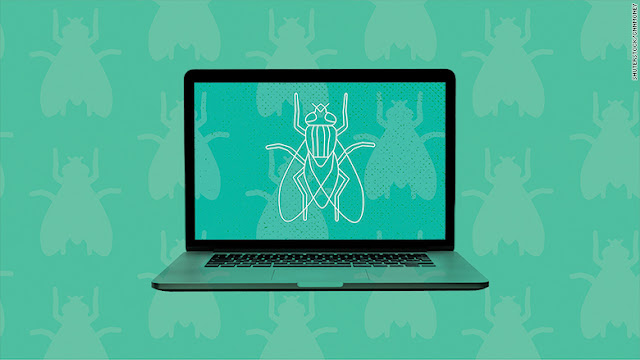Fruitfly malware, you will need a lot more insecticide
Mac OS users think that their computers are immune from
things like viruses or malware attacks and think that their computers are
somehow essentially protected. It is right that it’s less likely for a Mac OS
user to be hit or infected with a malware than a Windows user, but they’re not
malware-proof. Hackers may be more inclined to attack Microsoft’s operating
system and look for code vulnerabilities, as more people use Windows devices
than Macs. But Apple’s desktop operating system still gets its fair share of
malware.
A new threat that affected only a few hundred machines
was recently discovered and patched. This particular malware has a few scary
features built-in though, including the ability to operate the webcam on a
target’s computer and record everything the user types.
The Mac malware is called Fruit-Fly, the malware can
remotely take full control of webcams, screen, mouse, keyboards, and install
another malicious software. Fruit-Fly runs silently in the background, spies on
users through the computer’s camera, capture images of what’s displayed on the
screen and logs key strokes.
Anti-malware provider Malwarebytes made the discovery
earlier this month, but it may have been in the wild since October 14th.
A mysterious piece of malware that gives attackers
surreptitious control over webcams, keyboards, and other sensitive resources
has been infecting Macs for at least five years. The infections—known to number
nearly 400 and possibly much higher remained undetected until recently and may
have been active for almost a decade.
Besides the means of infection being unknown, the exact
purpose of the malware is also unclear. There is no evidence that the malware
can be used to install ransomware or collect banking credentials. That largely
removes the possibility that Fruitfly developers were motivated by financial
profit. At the same time, the concentration of home users largely rules out
chances the malware was designed by state-sponsored hackers to spy on targets.
Apparently, Fruitfly uses code functions predating the
first release of OS X in 2001. But what’s interesting about the malware is that
it’s not as widespread as one would assume, in spite of its advanced features.
Apparently, Fruitfly was being used in targeted attacks, which would indicate
that hackers were looking to spy on specific people.
There have been a number of stories over the past few
years about Chinese and Russian hackers targeting and stealing US and European
scientific research. Although there is no evidence at this
point linking this malware to a specific group, the fact that it’s been seen
specifically at biomedical research institutions certainly seems like it could
be the result of exactly that kind of espionage.
A lot of Mac users
are overconfident in the security of their Mac. The discovery just goes to
reiterate to everyday users that there are perhaps people out there trying to
hack their computers.
What’s even more puzzling is that the Mac malware can
also run on Linux devices. In spite of its scary capabilities, Fruitfly isn’t a
sophisticated piece of software and it can be easily detected as an anomalous
process running on Macs. Updating macOS to the latest version should fix the
problem, in case your device is infected.



Comments
Post a Comment